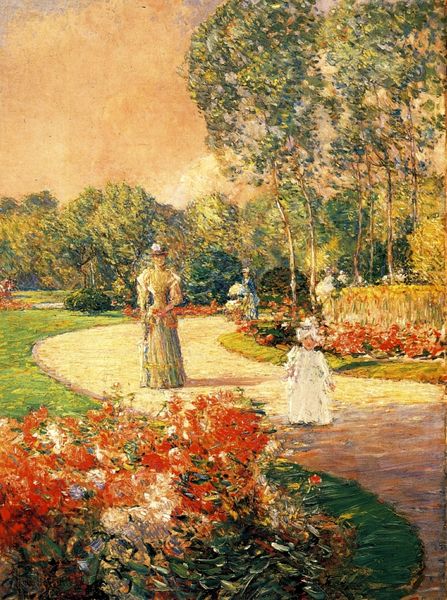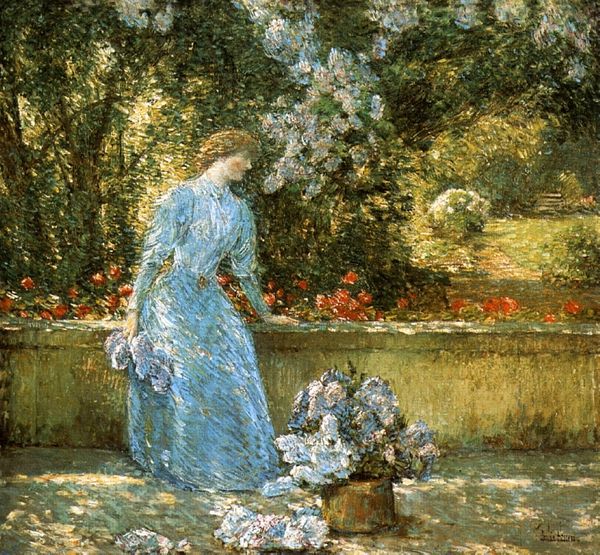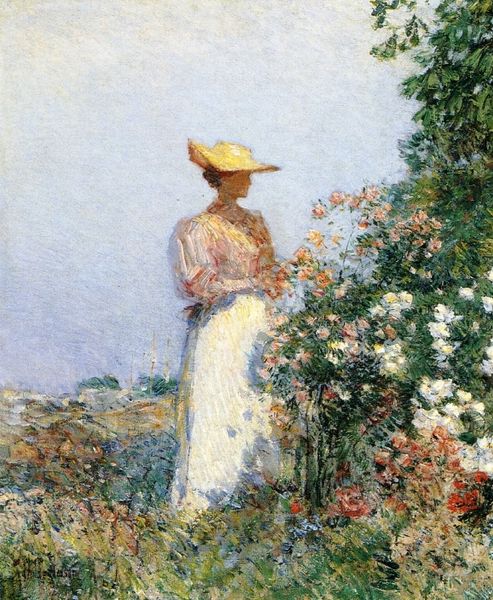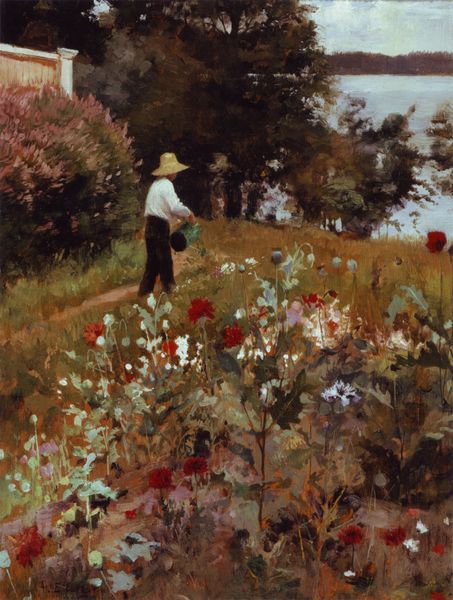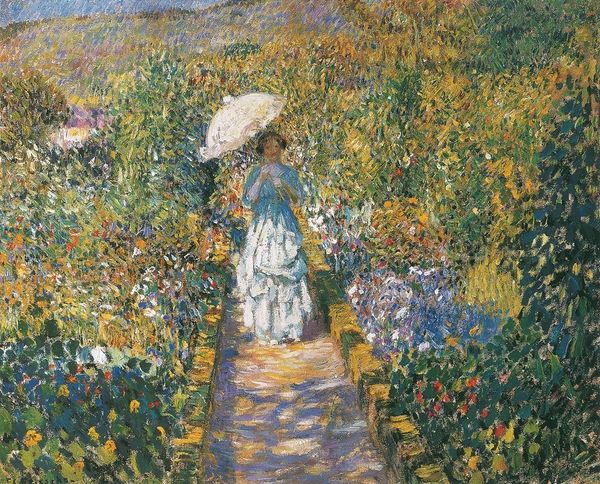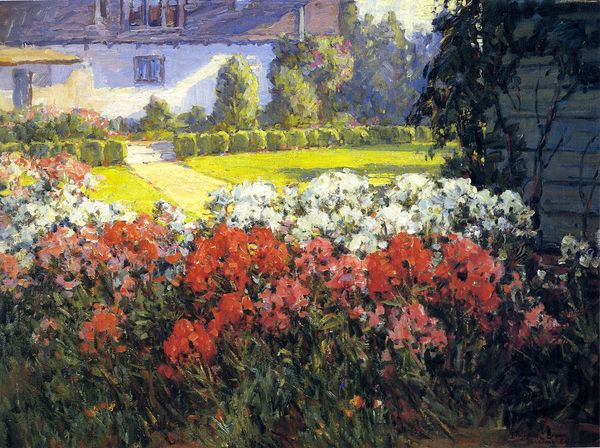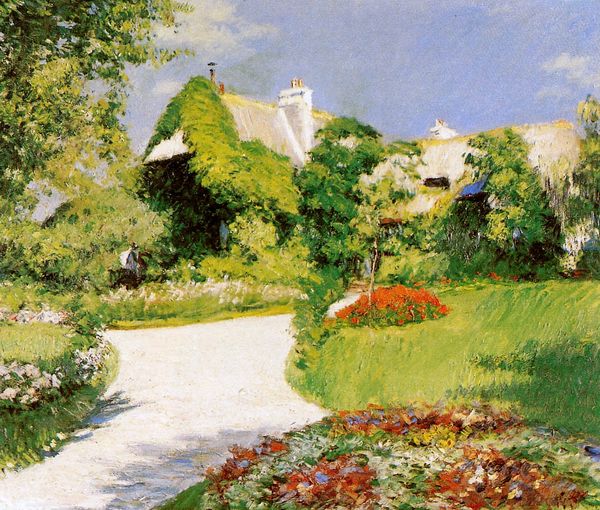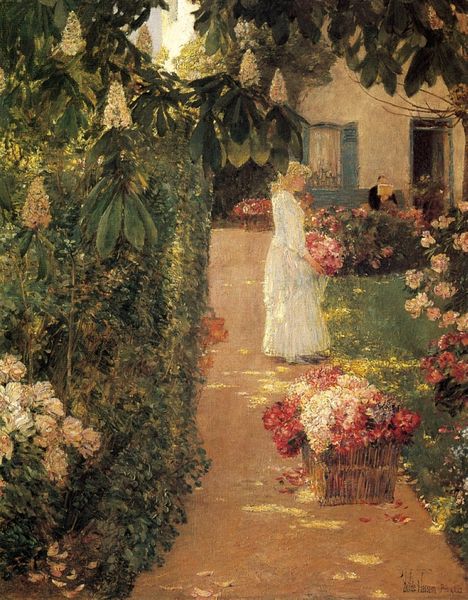
painting, plein-air, oil-paint
#
portrait
#
tree
#
garden
#
painting
#
impressionism
#
plein-air
#
oil-paint
#
landscape
#
flower
#
plant
Copyright: Public domain
Curator: Here we see Claude Monet's 1866 oil on canvas, “Jeanne-Marguerite Lecadre in the Garden.” A symphony of light and form rendered in the open air. What are your first impressions? Editor: Immediately, I am struck by the mood: serene, but with an underlying sense of solitude. The woman, almost ghost-like, stands apart from the vibrant flowers. It is a tranquil scene, yes, but imbued with a quiet melancholy. Curator: It is fascinating that you sense that. Given what we know, the garden wasn’t just any setting; gardens in Monet’s work serve as these idyllic spaces reflecting bourgeois leisure. The figure’s inclusion points towards established societal norms, and perhaps expectations of women during that period. Her attire suggests affluence, and her leisurely stroll emphasizes a certain privileged lifestyle. Editor: True. The garden becomes a stage upon which social roles are acted out. But isn’t it also a little subversive? Consider the positioning of the woman, almost fading into the background while nature takes center stage. Perhaps it’s a gentle commentary on the relationship between humanity and nature, questioning human dominance. Curator: I see your point. The dominance of the flowers and the less defined features of the woman might propose nature's indifferent strength. This can connect back to Impressionism’s larger project; how can we use the techniques of plein air to better grasp this dynamic tension in an evolving industrial society? Editor: And Monet's application of color is fascinating! The vivid reds of the flowers contrast dramatically with the subtle blues and whites of the woman's dress. Symbolically, these colors might point towards both passionate, internal lives but simultaneously represent the coolness and constraint placed upon women by social expectations. Curator: Right. Color certainly plays a symbolic part here. In many interpretations, white is seen as representative of purity and grace while red invokes not only love but passion, as you stated. The red's proximity to her could represent stifled emotions. All those flowers, meticulously rendered, convey complex internal states that she cannot otherwise outwardly express. Editor: Indeed. Overall, this work really makes one wonder whether Monet consciously set out to expose that tension inherent in societal structure, or if it evolved during his own changing place within those social structures as an up-and-coming artist. It’s a subtle yet powerful critique, masked beneath a veneer of pleasantness. Curator: And maybe it is in this duality, between aesthetic pleasure and veiled criticism, that the real brilliance of the piece lies. Thank you.
Comments
No comments
Be the first to comment and join the conversation on the ultimate creative platform.

